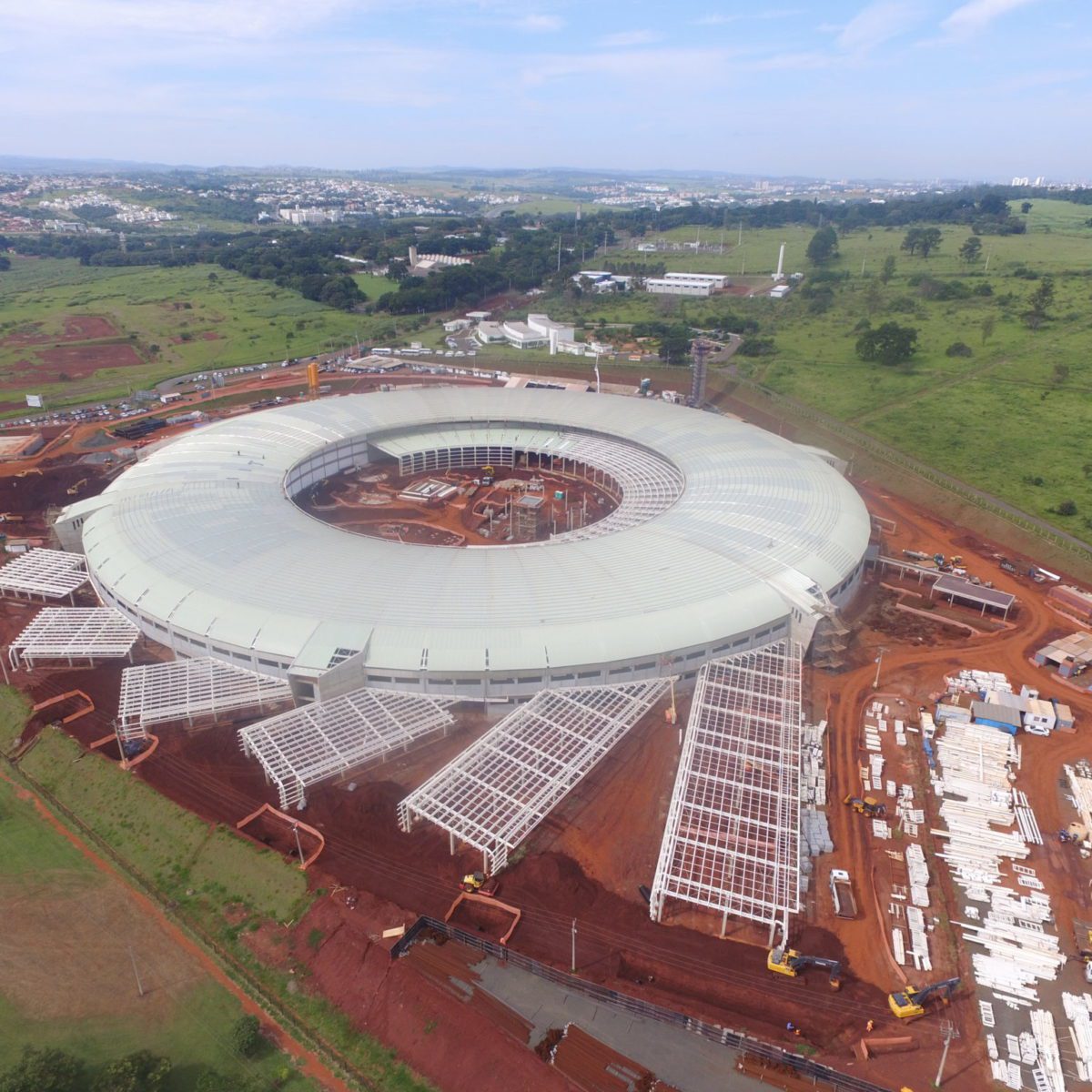
Sirius construction works in May 4th, 2017
The construction of accelerator floor, the most challenging phase of the building, was recently started
Sirius – the new fourth-generation synchrotron light source of the Brazilian Synchrotron Light Laboratory (LNLS) has recently completed more than half of its construction works. The inauguration is expected for 2018, following the first loop of the electron beams in the accelerators.
Sirius will be a state-of-the-art scientific tool for the structural analysis of materials, both organic and inorganic. Its accelerators and beamlines will be housed within a 68,000-square-meter building, which is among the most sophisticated ever built in Brazil, with unprecedented requirements for mechanical and thermal stability.
The assembly of the first of three layers of the roof has been completed. In parallel, the foundations for the special floor that will receive the electron accelerators was executed. It was started with the excavation of soil followed by the implantation of around 1300 concrete piles. Currently, the soil is being reinforced and placed again at the site, providing the support on which the floors will be built. This foundation is designed to avoid differential settlements and to help prevent the propagation of mechanical vibrations coming from outside, ensuring a high level of stability for the equipment.
The special floor will consist of a single 90-centimeter thick piece of reinforced concrete, consuming around seventy thousand cubic meters of special low retraction concrete, in addition to 900 metric tons of steel. The stability of the floor is considered a critical parameter of the constructive process since it affects the quality of the synchrotron light produced in the accelerators and consequently the quality of the research results.
Other Milestones
The Radio Frequency cavity of the booster was delivered by the German company RI in February, 2017. It will be powered by radiofrequency towers currently in production in the LNLS. In March, the first prototypes of beamline hutches were built for test in LNLS’s current synchrotron light source, UVX. In April, the last batch of the dipole magnets for the booster, manufactured by the Brazilian company WEG, was delivered. The Linear Accelerator (LINAC) was purchased from the Shanghai Institute Of Applied Physics. It will be delivered in July and installed as early as September. In November, the concrete blocks that support the girders will begin to be installed in the accelerators tunnel.
The event will take place, from November 22nd to 24th, 2017, at the CNPEM campus in Campinas, SP.
The prize is awarded to theses that have contributed significantly to the advancement of knowledge of nature and its properties.